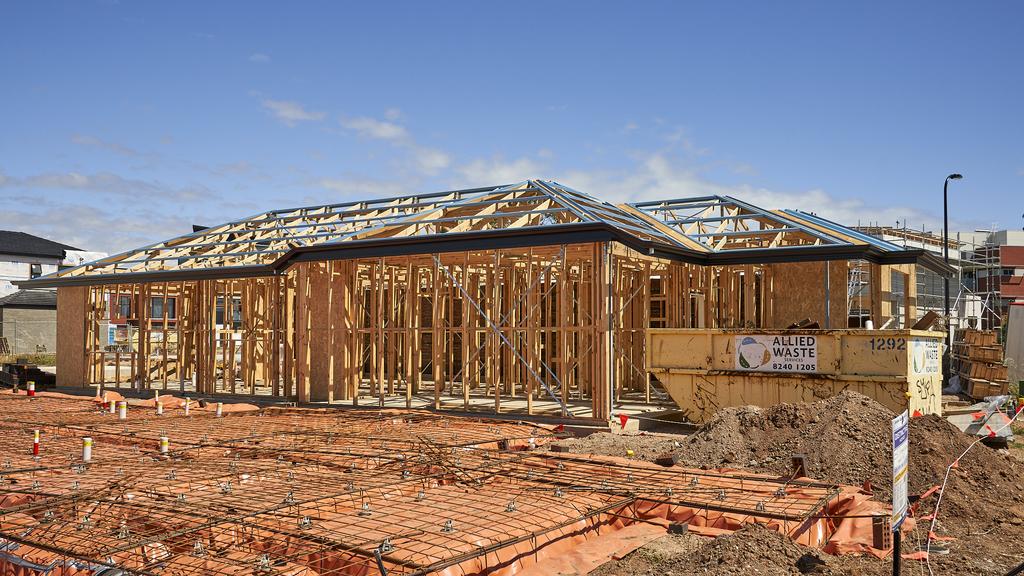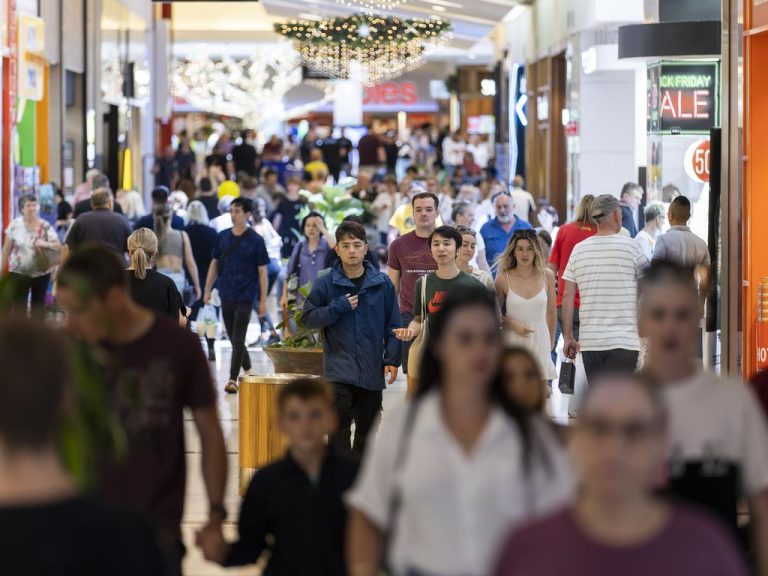Two-speed construction market now building up, according to Housing Industry Association

Home in construction in Woodville West, Sunday, Nov. 7, 2021. Picture: Matt Loxton.
The building industry is facing a period of divergence as smaller markets weather the economic storm better than larger counterparts, according to the Housing Industry Association.
South Australia and Queensland were named the top two performing states for residential building work in the industry body’s national scorecard for the first half of 2023, while falling approvals and financing troubles caused NSW and Victoria to fall.
Housing Industry Association chief economist Tim Reardon said the recent challenges of labour and material shortages, cost blowouts and poor weather throughout much of 2022 have begun to work unevenly through the industry, creating a two-speed market.
“Conditions for the residential building industry are undergoing a rebalancing as the market transitions from a record boom to the deepest trough in over a decade in 2024,” he said.
“As the industry progresses through this cycle, building activity in each region is starting to diverge.”
Mr Reardon also noted the dozen interest rate rises by the Reserve Bank had been affecting the construction of housing through consumer sentiment, with fewer new home sales, building approvals, and weaker home-loan borrowing.

Generic home construction photo. Builder, home, bricks
The HIA Housing Scorecard report ranked each of the eight states and territories on 13 performance metrics against their decade average, covering detached and multi-unit building activity, renovations, housing finance, and rates of overseas and interstate migration.
Both NSW and Victoria slipped two places in the rankings, to sixth and seventh place respectively, as buyers shied away from higher land costs in those two states.
Strong renovation activity helped support the country’s best performers, with South Australia benefiting from moves by the state government to encourage more work through stamp duty reductions, the release of 25,000 blocks of land, and an investment in public housing stock.
Queensland, which proved to be the beneficiary of strong interstate migration through the pandemic, has been underpinned by activity in the apartment space, similar to the third-ranked ACT, which is also reporting more work in multi-unit building.
Detached and unit approvals rose significantly in the fourth-ranked Tasmania, which is balancing the relatively weaker return of overseas migrants and exodus of interstate migrants. Western Australia took out fifth place, as the home-building industry faced significant capacity constraints. However, the continued inflow of people from interstate and overseas has positioned the state well for future activity.
The Northern Territory was the worst performer, with the HIA noting another economic or employment catalyst was likely needed to “refuel” the NT’s home-building sector.
Construction industry insolvencies rose by more than 75 per cent nationally in the past year alone, under the weight of work builders took on during the Covid-19 pandemic, encouraged by oversubscribed economic supports such as HomeBuilder.
Housing supply has stalled in federal parliament, with the government’s signature Housing Fund blocked in the Senate by the Greens and Coalition, who are advocating for greater action to protect renters.
Mr Reardon believes major reform is needed to cut building costs for developers and the consumer to ensure the pipeline of homes is maintained.
“Supporting new home building in these markets by reducing costs, attracting more investment and improving capacity is essential to ensure an adequate supply of new homes commence construction,” he said.







